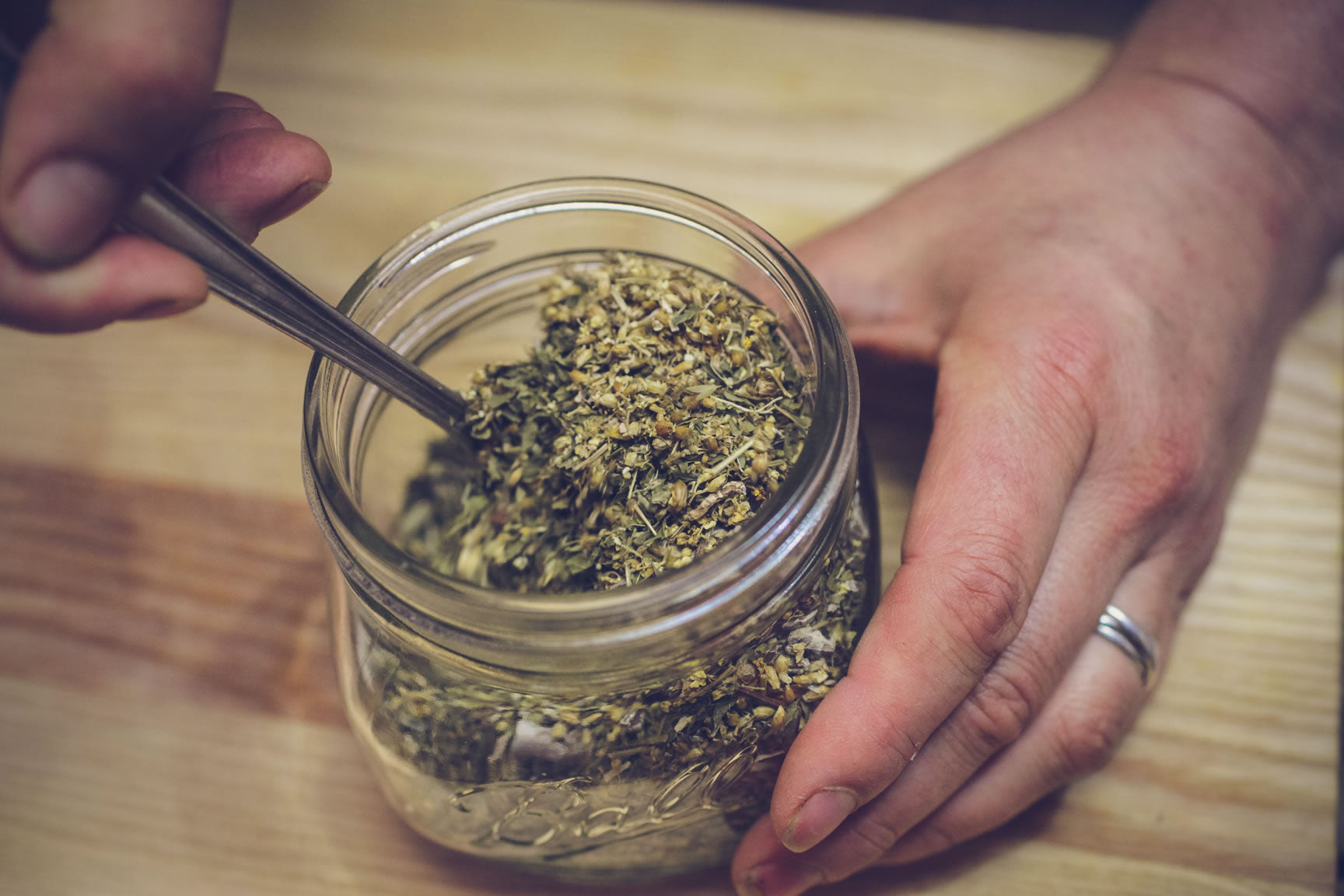- Continue Shopping
- Your Cart is Empty
Make Your Own Tea Blends

What You'll Need
Equipment
- measuring cups and spoons
- air tight jars for storage, we use these Weck Tulip jars
Ingredients for
Hibiscus Ginger Lemongrass Blend
- 1 part dried hibiscus
- 1 part dried ginger
- 1 part dried lemongrass
- 1/2 part dried orange peel
Ingredients for
Immune Support Blend
- 1 part dried spearmint
- 1 part dried elderflower
- 1/2 part dried yarrow
- 1/2 part dried echinacea root
Ingredients for
Evening Blend
- 1 part peppermint
- 1/2 part lavender
- 1 1/2 part chamomile
The choicest tea herbs are found, not in boxed bundles of tea bags, but in the bulk department of your local health-food store, where they are stored carefully with attention to temperature, humidity, and freshness. There’s a wealth of nutrition and possibility in those unassuming jars, and the tea blends that follow are really just an invitation to experiment with the contents of those jars. The spice trade drove world commerce for centuries, and the quest for new flavors and spices were financed by kings and queens as well as merchants. Whatever else one might say about the state of the world, it is a small, fragrant blessing that we have so many flavors at our disposal; medicines and flavors from all over the world are available for cents an ounce at your local store. We live in an age of wonders.
These blends attempt to strike a balance between the freshness of the bulk herbs, and the convenience of having a premade blend on hand; we used a half cup scoop for a full part, a quarter cup scoop for half parts in the pictures you’ll see below. However, if you keep these herbs on hand, feel free to substitute the term parts for measurements ranging from tablespoons to cups, to make batches small and large.
Generally speaking, 2 teaspoons of tea blend per 6 ounces hot water is a good ratio, to begin with. Technically, we should call these blends “tisanes”, to distinguish them from teas (green, black, and white) made from the Camellia Sinensis plant. We like for things to be called by their right and proper names. But we like for folks to know what we mean, too…so call them what you will, and sip them as you like, and all will be well.
Hibiscus Ginger Lemongrass
This tea is truly beautiful, even before it is poured into the cup. The tisane is a ruby red color, an effect of the dried hibiscus flowers that lend their rich crimson to everything they touch. Lemongrass whispers tales of warm climes, the rustle of tall grass and the scent of citrus. The ginger adds a good bit of heat and spice; you can reduce by half if you prefer a gentler flavor. Both the ginger and orange peel can be prepared at home, by slicing or grating thinly, and heating in a 200° F oven for 2-3 hours, if you prefer to make your own.
Immune Support Blend
Spearmint, softer and more mellow in flavor than its relative peppermint, is nevertheless a powerful healing herb. It settles the stomach, cools and soothes a sore throat. Elderflower is also known to be beneficial in the treatment of colds and flu, and it lends a pleasant, floral sweetness to the mix. Yarrow is a healing herb known from ancient times, and is particularly helpful for head colds; echinacea root is well-known as an immune stimulant. This tea is most soothing when drunk after a 10-minute infusion, with honey and lemon. Sip and be well.
Evening Blend
This blend is best in the evening when the calming, soothing chamomile can work her magic on your senses. Peppermint and lavender add to the feeling of calm, permeating from cup to steam to body and mind. Breathe it in. 
Over to You
It’s part of our mission here at Mountain Feed to help you make delicious, sustainable, homemade food more often. Stop by and say hello on Facebook, Twitter, Instagram or Pinterest. Or, as always, you can do it the old fashioned way and come by the store to speak with one of our in-house experts.
